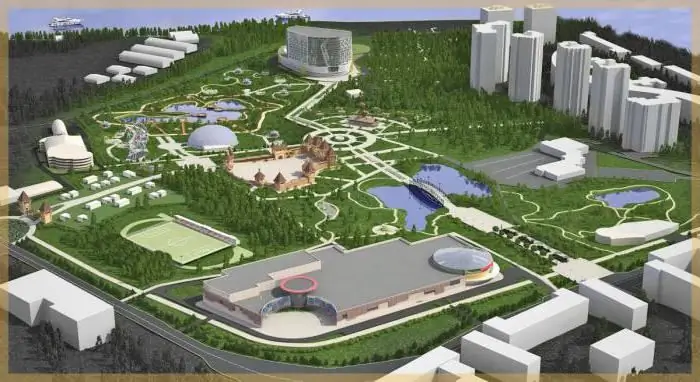- Author Harold Hamphrey [email protected].
- Public 2023-12-17 10:06.
- Last modified 2025-01-24 11:10.
At the beginning of the 18th century, the Yusupov Garden was an unremarkable piece of land bounded by the Fontanka River and Sadovaya Street. It was then that he was presented to Prince G. D. Yusupov Peter the Great. Later, under the leadership of the prince's son, Senator B. G. Yusupov, a beautiful garden with ponds and canals was laid out on this site, and a baroque wooden mansion was built on the banks of the Fontanka.

Later, in 1789, when the son of B. G. Yusupov and brought with him a large collection of paintings and sculptures, there was a question of reconstructing the mansion. The sculptor D. Kvarnegi was invited to implement the architectural concept, and by 1793 he managed to create a palace in the classical style.
The adjacent garden has also undergone significant changes. A huge pond with four islands, bridges was dug on its territory, and goldfish were launched into its waters. Throughout the garden, artificial mounded picturesque hills, flower beds, marble statues, elegant gazebos and greenhouses with rare fruits appeared. The Yusupov Garden has opened its gates to everyone who wants to take a stroll through its magnificent territory. But soon from this ideahad to be abandoned due to increased cases of hooliganism and theft.

In 1810, the family of Prince Yusupov broke up, and he sold his estate to the city. The garden found a new owner - the Institute of the Corps of Railway Engineers, and soon the construction of educational and residential buildings began on its territory. This significantly reduced the area of the garden and disfigured the once magnificent scenery.
Fifty years later, in 1863, at the behest of Alexander II, part of the garden was reopened to the general public. For this, a pond with two islands was cleared. Connecting chain bridges were brought to them, a boat station was built and a fountain was launched. Yusupov garden has become incredibly popular among the townspeople. A shooting gallery worked here in summer, and a skating rink in winter, slides were built and Christmas festivities were held with fireworks and pancakes.
In 1878, the country's first figure skating competition took place in the Yusupov Garden, and from that moment it began to be considered the birthplace of figure skating in Russia. In 1887, the entire garden was transferred to the Society of Skating Fans, and a year later a figure skating school was opened here. But the garden was still open to the townspeople on holidays and folk festivals. In a short time, the first hockey team in the country was founded here and Russian figure skating championships were organized.

From 1892 to 1900, the Yusupov Garden underwent the most disastrous changes for it. Its northeastern part was built up with offices of the Ministry of Railways, includingincluding the Railway Museum. And in the northwestern part, the Imperial Society for Water Rescue is located, which built a large number of buildings on the territory - residential buildings, a warehouse, an office, a museum and a meeting room. All trees were cut down in this area and water rescue training equipment was installed.
After 1917, the school of figure skating continued to work, and in 1924 the first championship of the Soviet Union in figure skating was held here. But the garden was renamed the Children's Park of the Oktyabrsky district of Leningrad. In 1990, it received its former name.
Now the Yusupov Garden of St. Petersburg is incredibly beautiful and well-groomed, it welcomes citizens and guests of the city at any time of the year. There are concerts of classical music, a blues music festival, an ice rink is open in winter and, as before, Christmas festivities take place.
Travel through St. Petersburg to the Yusupov garden to metro stations: Sadovaya, Spasskaya, Sennaya square. From the subway to the street. Sadovaya, 54.






